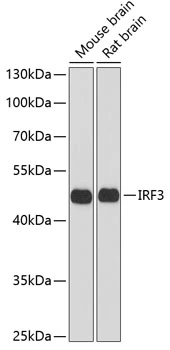
WB analysis of various sample lysates using GTX54366 IRF3 antibody. Dilution : 1:1000 Loading : 25microg per lane
IRF3 antibody
GTX54366
ApplicationsImmunoFluorescence, Western Blot, ImmunoCytoChemistry, ImmunoHistoChemistry, ImmunoHistoChemistry Paraffin
Product group Antibodies
TargetIRF3
Overview
- SupplierGeneTex
- Product NameIRF3 antibody
- Delivery Days Customer7
- Application Supplier NoteWB: 1:500 - 1:2000. ICC/IF: 1:50 - 1:200. IHC-P: 1:50 - 1:200. *Optimal dilutions/concentrations should be determined by the researcher.Not tested in other applications.
- ApplicationsImmunoFluorescence, Western Blot, ImmunoCytoChemistry, ImmunoHistoChemistry, ImmunoHistoChemistry Paraffin
- CertificationResearch Use Only
- ClonalityPolyclonal
- ConjugateUnconjugated
- Gene ID3661
- Target nameIRF3
- Target descriptioninterferon regulatory factor 3
- Target synonymsIIAE7, interferon regulatory factor 3
- HostRabbit
- IsotypeIgG
- Scientific DescriptionThis gene encodes a member of the interferon regulatory transcription factor (IRF) family. The encoded protein is found in an inactive cytoplasmic form that upon serine/threonine phosphorylation forms a complex with CREBBP. This complex translocates to the nucleus and activates the transcription of interferons alpha and beta, as well as other interferon-induced genes. Alternatively spliced transcript variants encoding multiple isoforms have been observed for this gene. [provided by RefSeq, Nov 2011]
- Storage Instruction-20°C or -80°C,2°C to 8°C
- UNSPSC12352203
References
- Mitochondrial damage and activation of the cytosolic DNA sensor cGAS-STING pathway lead to cardiac pyroptosis and hypertrophy in diabetic cardiomyopathy mice. Yan M et al., 2022 May 11, Cell Death DiscovRead more

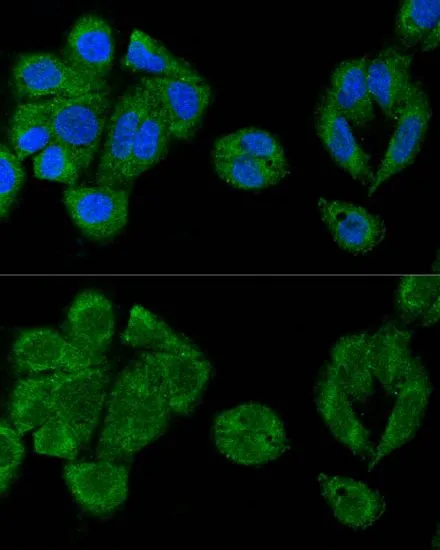
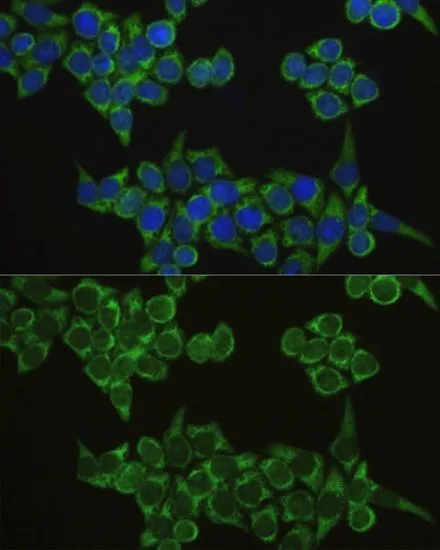
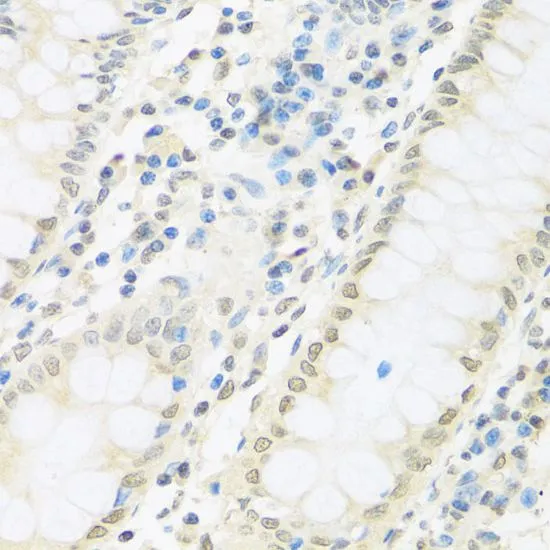
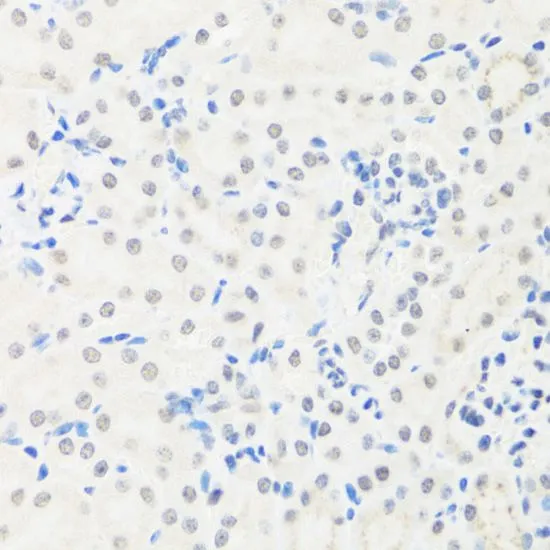
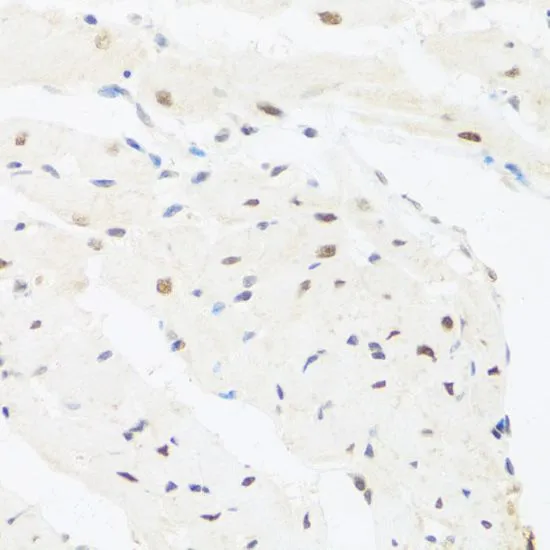

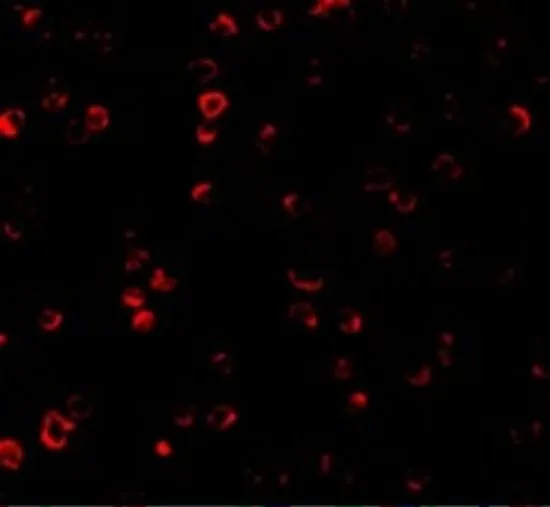
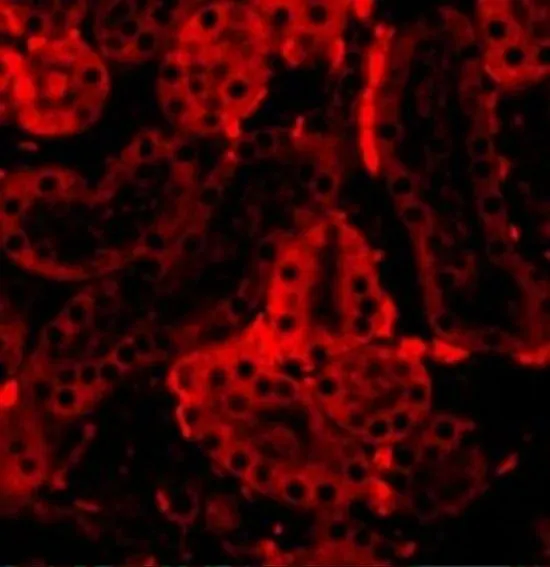
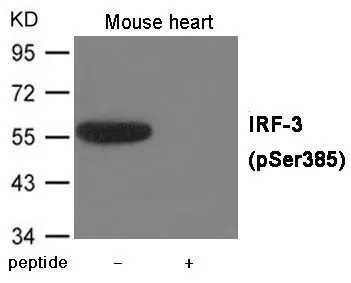
![WB analysis of wild-type (WT) and IRF3 knockout (KO) HeLa cell extracts using GTX00956 IRF3 antibody [GT1194]. Dilution : 1:1000 Laoding : 25microg](https://www.genetex.com/upload/website/prouct_img/normal/GTX00956/GTX00956_20200327_WB_1_w_23053121_530.webp)
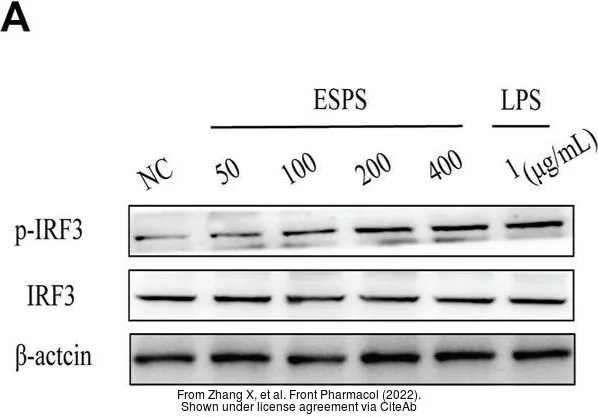
![ICC/IF analysis of COS7 cells transiently transfected with IRF3 plasmid using GTX84288 IRF3 antibody [4D4].](https://www.genetex.com/upload/website/prouct_img/normal/GTX84288/GTX84288_1010_ICCIF_w_23061420_749.webp)